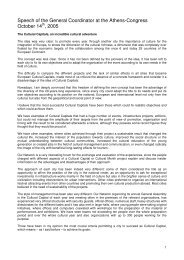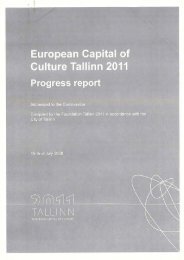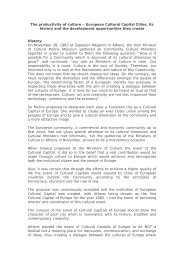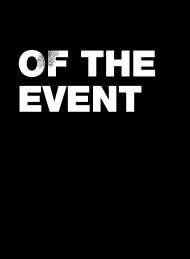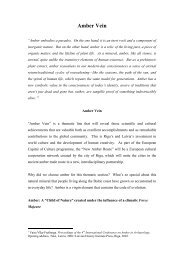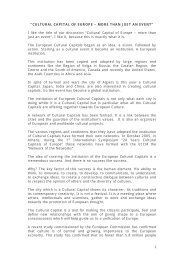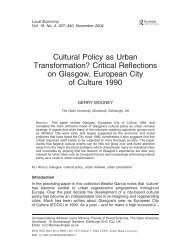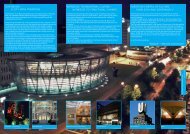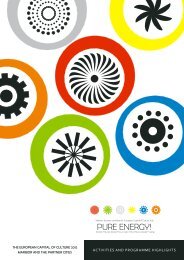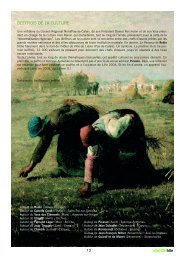Concise.pdf - Brugge Plus
Concise.pdf - Brugge Plus
Concise.pdf - Brugge Plus
- No tags were found...
You also want an ePaper? Increase the reach of your titles
YUMPU automatically turns print PDFs into web optimized ePapers that Google loves.
However, in addition to this specific programme, which was very intensive from a<br />
budgetary, organisational and productional point of view, the idea was also to hijack<br />
the city and turn it into a “Place To Be”. The message was that youth events that draw<br />
a full house in Antwerp, Ghent or Brussels can also be successfully staged in Bruges.<br />
The Kunstbende (Art Gang) finale travelled to Bruges and won over the Concertgebouw<br />
with verve, as did various other children’s art festivals: Kunstkoters (Art Kids),<br />
Oorsmeer (Ear Wax) and Onder dak (Under Cover), the opening of the Flemish Young<br />
Persons’ Book Week 2002.<br />
42<br />
BRUGGE 2002<br />
How culture drove into our schools<br />
BRUGGE 2002 was also driven by a wider social concern about the place of culture in<br />
our day-to-day lives and more especially within school walls. We outlined a series of<br />
projects that set about using culture as a method of learning, in various different<br />
ways.<br />
For primary schools there was the Culture Van, which literally drove into Bruges’s<br />
playgrounds as a travelling taster of the Cultural Capital. It was a workplace where<br />
children could think about art and culture in an active and creative manner.<br />
Furthermore the project Kabba was developed, involving a bag full of culture custom<br />
designed for children and aimed at enabling them to find out about the city, actively<br />
and on the basis of their own world of experience, in three thematic walks. With suitable<br />
pride this can be described as one of the direct hits and a pioneering children’s<br />
project for an up-to-the-minute perception of the city. More than 3,316 children set off<br />
with this culture bag, and the project is to be continued in the future.<br />
For secondary schools, the project KIR was organised, in which six trios of schools,<br />
companies and artists entered into dialogue with each other for a whole year. In this<br />
sense KIR was a pioneer in terms of new joint ventures, and ushered in sector-foreign<br />
issues to sectors that were brought face to face with each other for the first time<br />
in such a concrete manner. Issues such as globalisation, internationalisation, company<br />
missions, and educational forms and content were adopted as underlying reflection.<br />
KIR worked with a range of training levels and deliberately set itself up as a<br />
“guinea pig” for new ways of integrating culture into our education system. On<br />
account of the wider relevance, the project was also followed up scientifically and led<br />
to the organisation of an international<br />
symposium, entitled<br />
Right to Culture.<br />
From May 2 nd to 12 th these and<br />
other education projects –<br />
including the international artistic<br />
workshop project Seven joys /<br />
Seven senses with a hundred and<br />
fifty students from seven countries<br />
– unveiled their results<br />
before a broad public in the KIR<br />
festival, an education-cum-culture<br />
festival that established<br />
itself at sites throughout the city.<br />
Thoughts that had occupied the<br />
minds of dozens of young people<br />
for a whole year could thus<br />
come into interaction with the<br />
outside world.<br />
Bl!ndman<br />
© GUY KOKKEN<br />
© KIK-IRPA BRUSSELS<br />
Portrait of a City, Bruges 1847-1918



